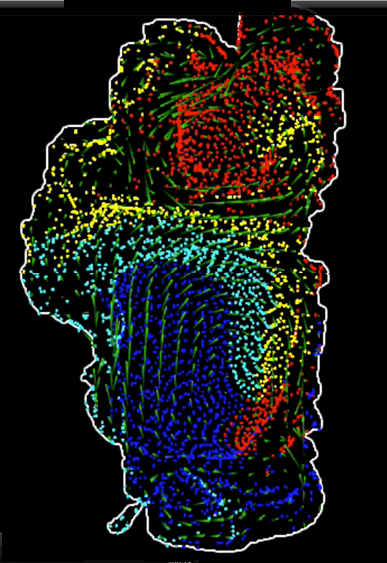Measuring the water current at a single point provides valuable data – but only at that point. What is often important to know is how water moves all around the lake, and where it would carry pollutants or invasive species once they were in the lake. Water current drifters do that. TERC has used surface drifters attached to underwater sails (or drogues) to measure the paths that they take when carried solely by currents. A GPS unit in the drifter keeps track of the ever changing position, and in recent versions that data is sent to us in real-time via satellite.
The drifter studies to date have revealed a lot of new information about Lake Tahoe. We know that the circulation is dominated by two main eddies or gyres. The one in north travels counterclockwise, while the one in the south moves clockwise. Smaller gyres occur at the edges of these major gyres, and they disappear and reappear depending on the winds. The first hint that Asian clams could travel across the lake from east to west in less than a day was revealed by a drogue study. Our interest is now on understanding the small gyres that run along the nearshore regions of the lake.
Funding for this research has spanned many years, with numerous sources. Funders include the US EPA, East Bay Municipal Utility District (EBMUD), SNPLMA, the UC CITRIS Program and private donors. Our newest collaboration is with the students of the Tahoe Expedition Academy in King’s Beach. Together we will be monitoring the currents off the north shore of Lake Tahoe and developing a web application to show the current movements.

